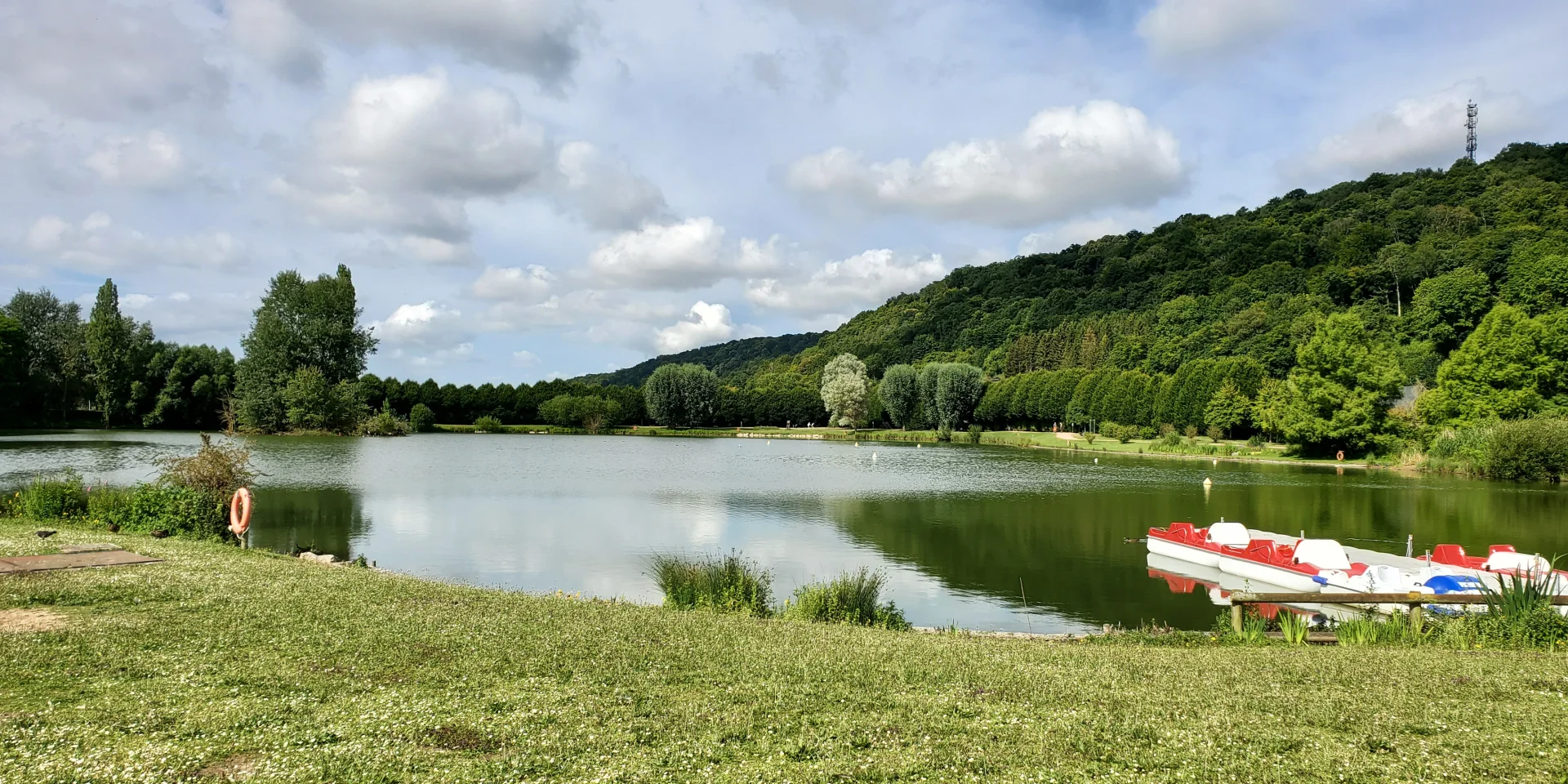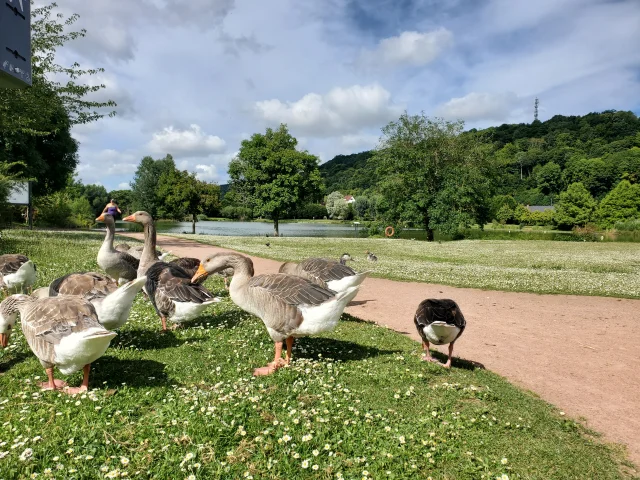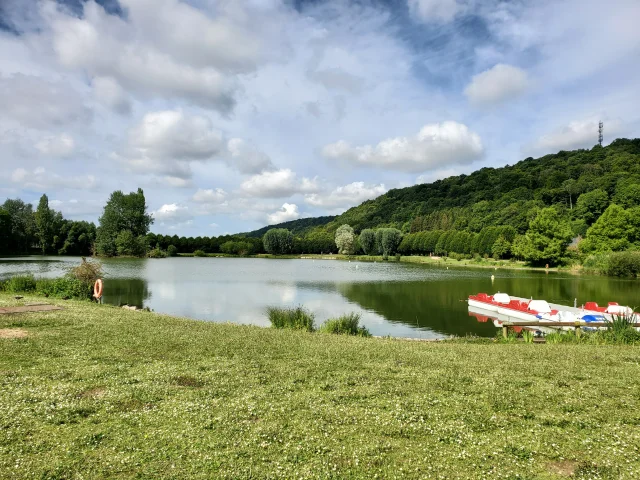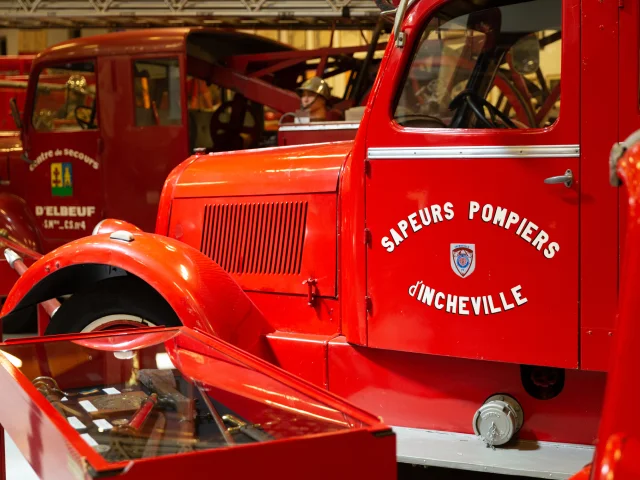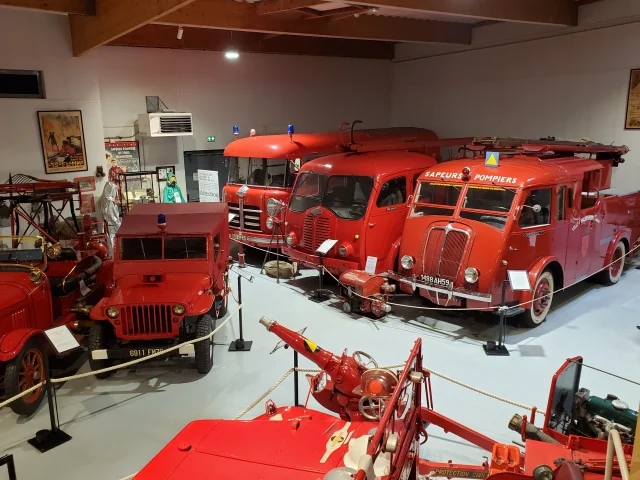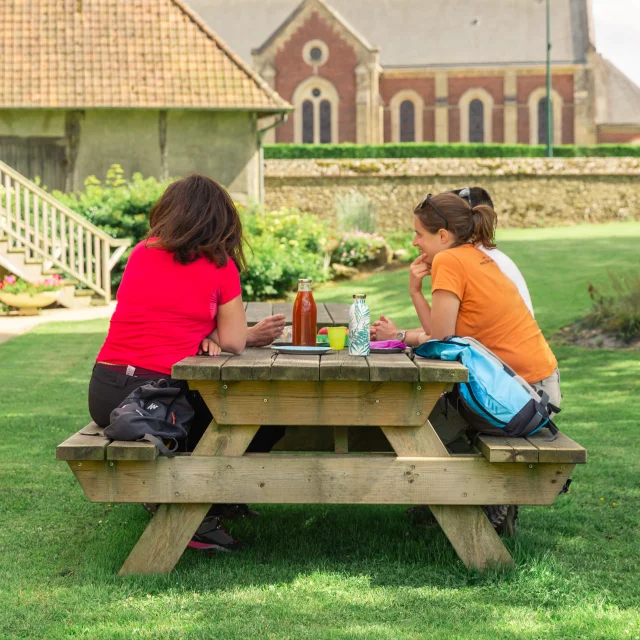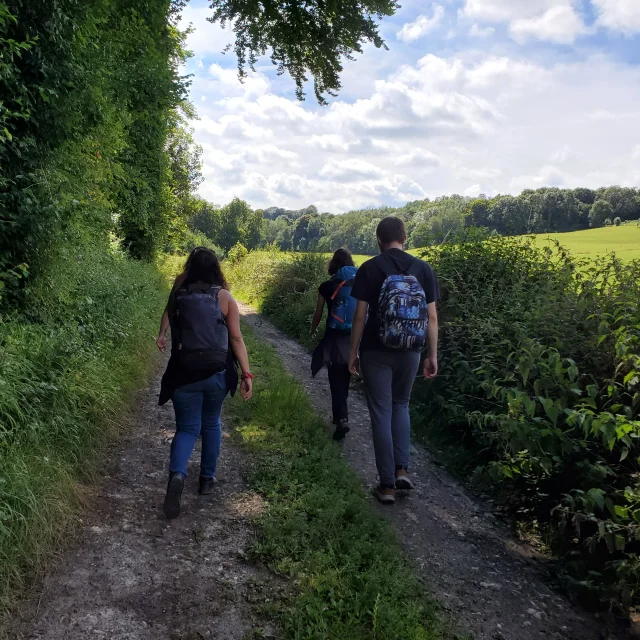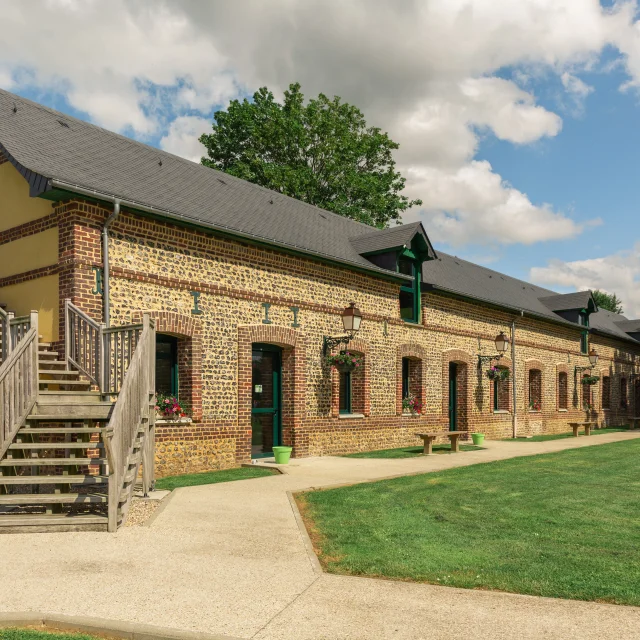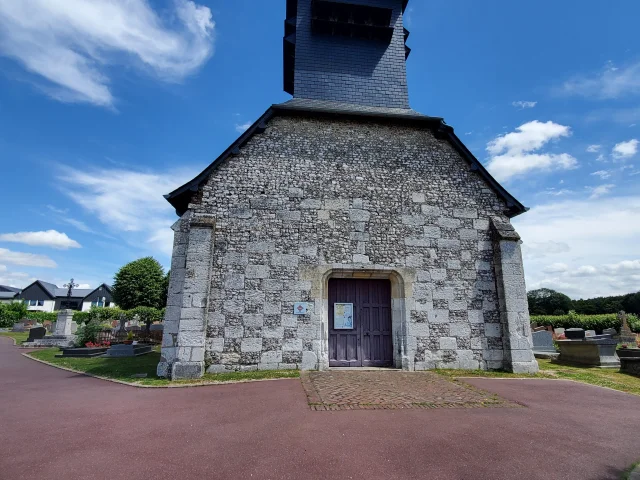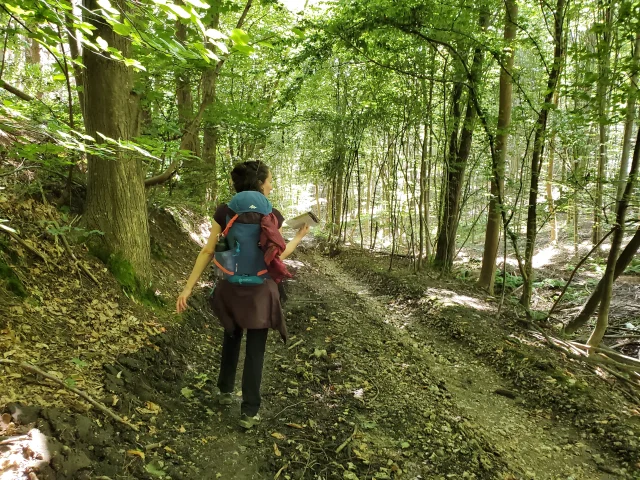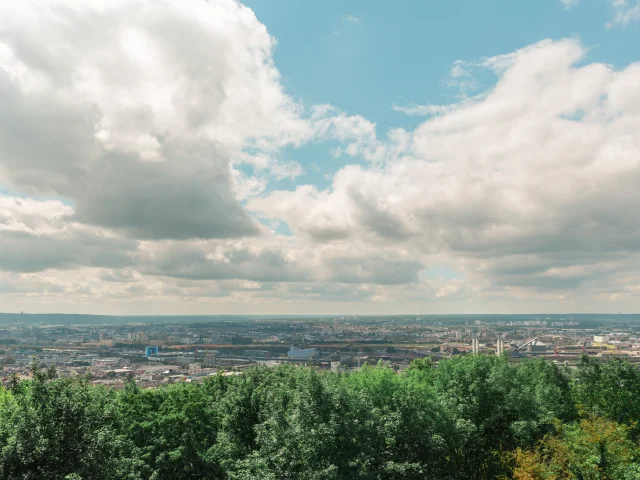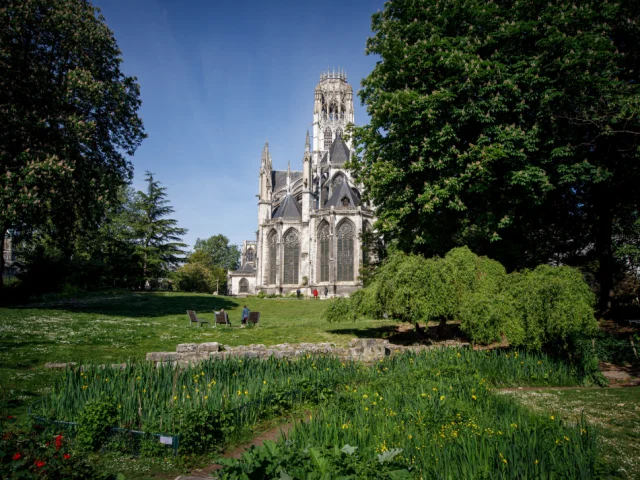Departure for the GR® 210
After breakfast, it’s off to Rouen station in bright sunshine, with the train to Dieppe already on track no. 6, waiting for me for just a 10-minute journey to Montville. I join my colleagues from the other tourist offices in the town park to take the GR® 210, marked in red and white. This park is a real change of scenery, with a 3-hectare lake, a water garden, an arboretum, a bird sanctuary, a playground and a petanque court. Many joggers run an 800m loop around the lake. Children shyly approach the wandering geese, ducks, swans and moorhens. In short, a veritable oasis in the middle of the city. We also pass the church of Notre-Dame de l’Assomption, on which the town council has decided to inscribe the republican motto “liberté, égalité, fraternité” (liberty, equality, fraternity), as on all public buildings.
